Ever wonder what would happen if a HazMat incident occurred in Singapore? The SCDF’s rescue officers showcased exactly why they are real-life superheroes when they responded to a HazMat incident unfolding in a “mall”. While the HazMat situation they were responding to was a live demonstration for the CBRNe Convergence Asia conference, the prowess that the officers showcased was most definitely real.
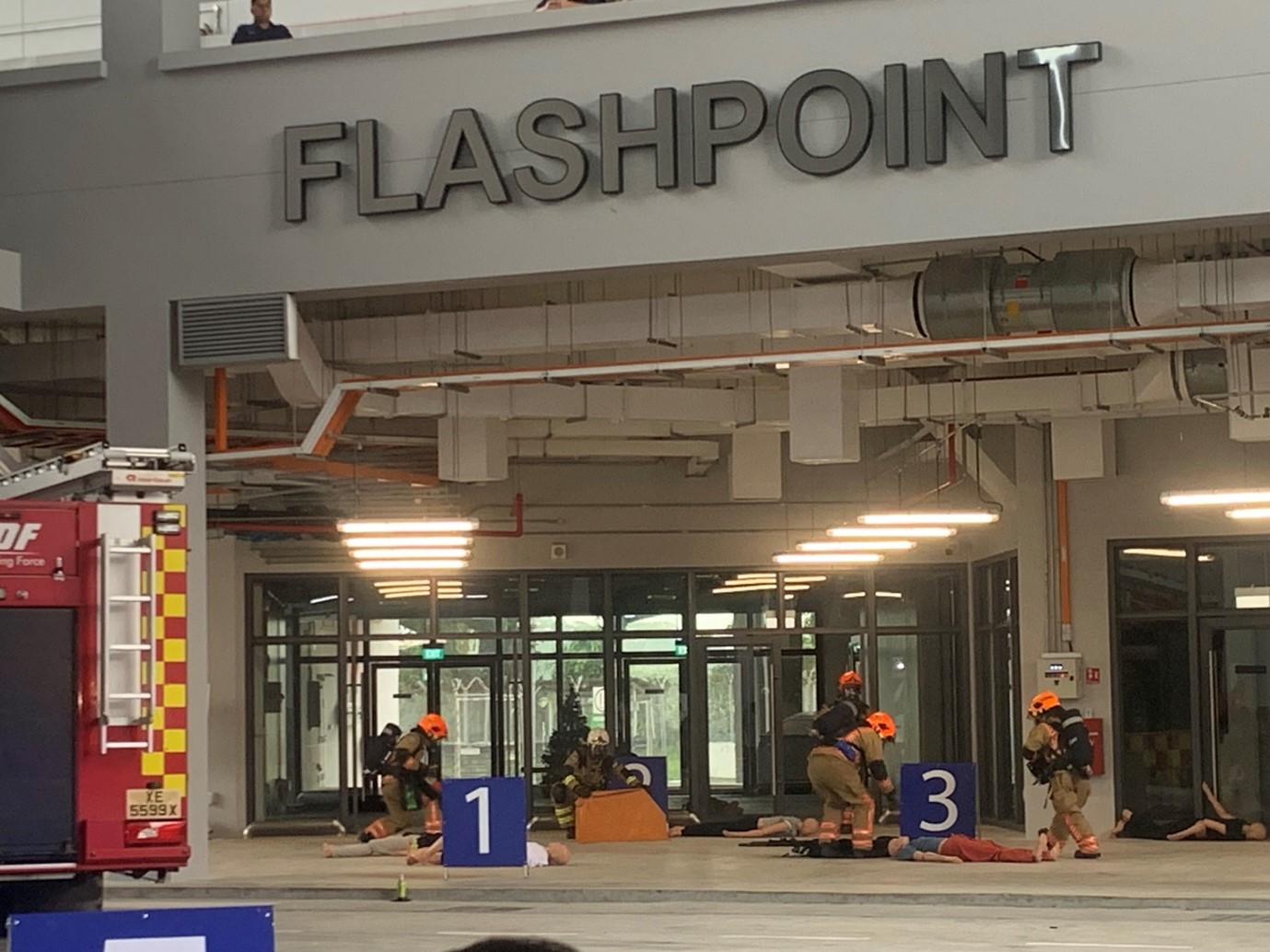 SCDF responders rescuing casualties and decontaminating the site. (Photo: HTX)
SCDF responders rescuing casualties and decontaminating the site. (Photo: HTX)
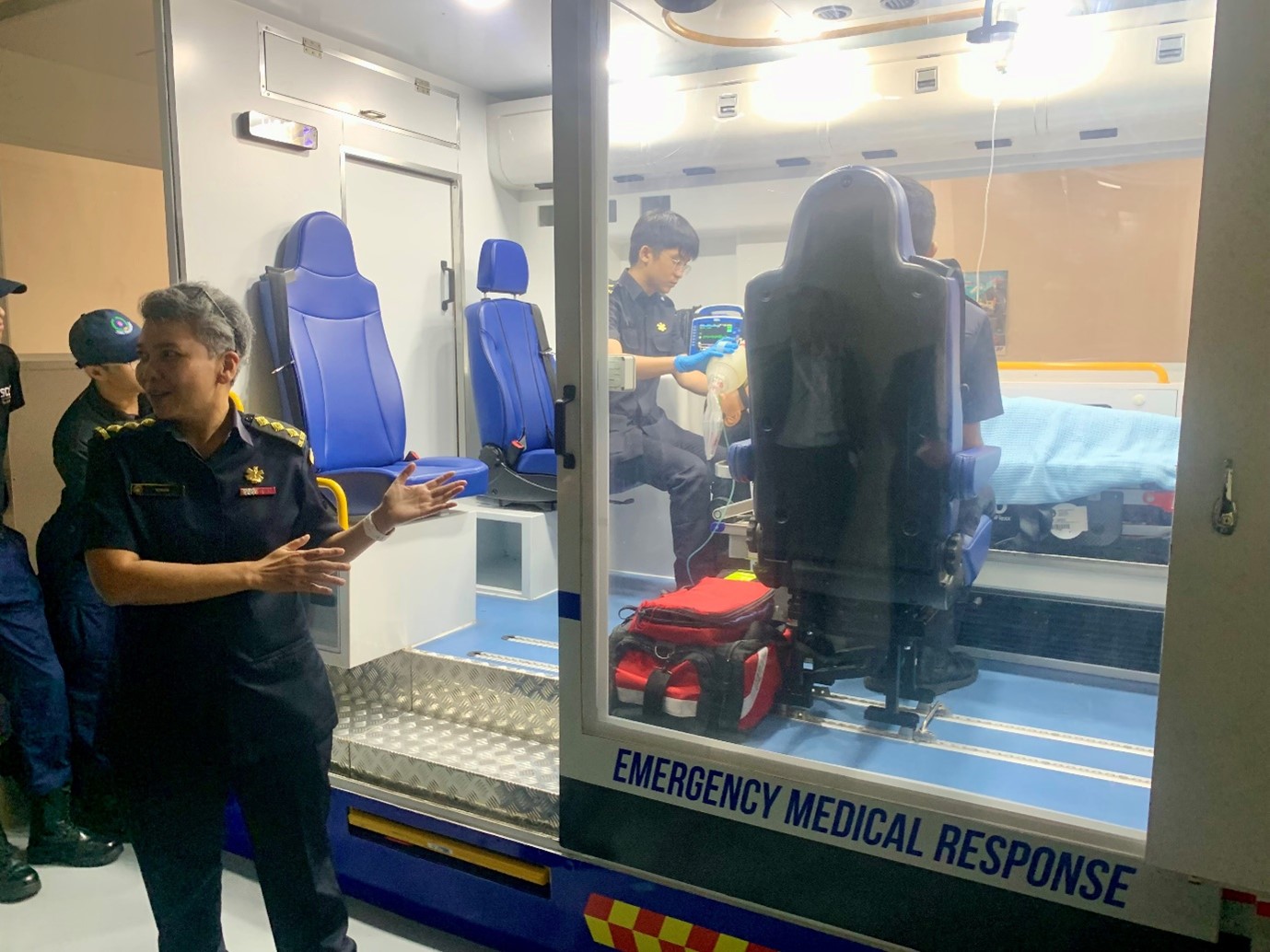 SCDF's seventh-generation ambulance, jointly developed by the SCDF and HTX. (Photo: HTX)
SCDF's seventh-generation ambulance, jointly developed by the SCDF and HTX. (Photo: HTX)
Like a scene straight out of a Hollywood blockbuster, SCDF rescue officers rushed to the “mall” in the seventh-generation ambulances jointly developed by HTX and the SCDF. Upon reaching the scene, rescue officers gently placed the casualties on stretchers and loaded them into the ambulance using its electronic pulley-controlled loading and unloading system, ensuring that not a single stretcher would be dropped. Within the ambulance was also an in-built automatic decontamination spray that could decontaminate the entire ambulance within 20 minutes!
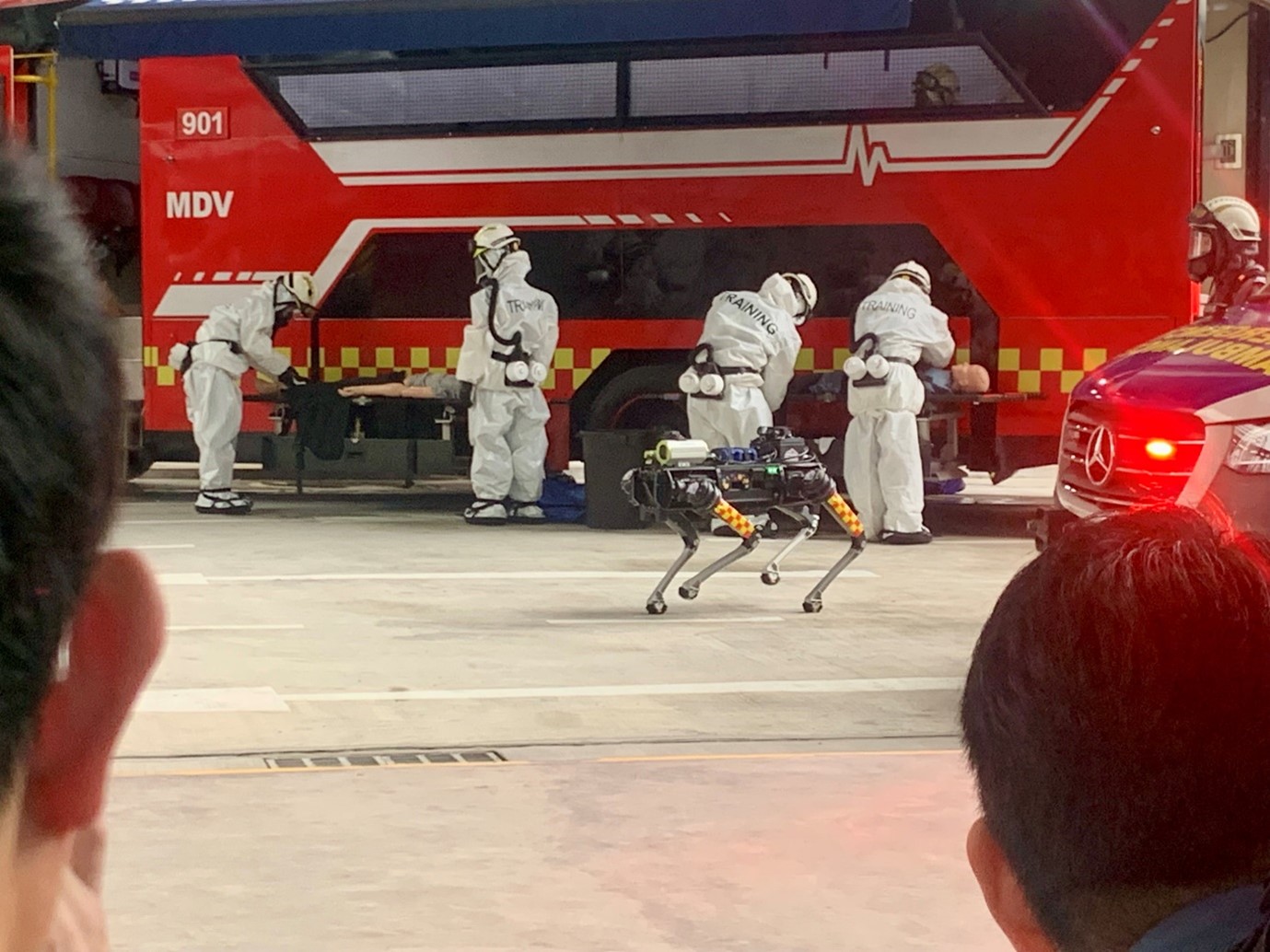 Rover-X amid the action. (Photo: HTX)
Rover-X amid the action. (Photo: HTX)
Accompanying the rescue officers was man’s best friend, Rover-X, a robotic dog developed by HTX’s Robotics, Automation and Unmanned Systems (RAUS) Centre of Expertise (CoE) in collaboration with Klass Engineering and Solutions, Ghost Robotics and A*STAR’s Institute for Infocomm Research (I2R). While Rover-X cannot decontaminate a site, it is able to autonomously monitor dangerous sites with its in-built camera and sensors.
Thanks to the quick and proficient work of SCDF’s rescue officers, the scene ended much like the “good” ending in any disaster movie, with all the civilians being rescued and the site being secured.
This exercise took place at the CBRNe Convergence Asia 2024, a premier conference organised by the British Organisation CBRNe World and co-hosted by HTX and the Singapore Civil Defence Force (SCDF) from 23-25 January 2024. The event brought together experts from around the world to share innovative ideas, insights, and experiences in the chemical, biological, radiological, nuclear, and explosives (CBRNE) field.
Training to be a superhero
Much like superheroes from the movies, the SCDF’s rescue officers have a tough job. Operating in stifling Personal Protective Equipment (PPE) gear that generates intense heat, they must also be incredibly fit to handle the weighty rescue equipment and navigate confined spaces in their mission to save civilians.
The SCDF’s rescue officers undergo their “training arcs” in the Civil Defence Academy’s new Emergency Responders’ Fitness Conditioning and Enhancement Lab (EXCEL), jointly developed by HTX’s Human Factors & Simulation (HFS) CoE and the SCDF. EXCEL aims to boost emergency responder capabilities across the Home Team by pushing the boundaries of human strength and mental resilience to new heights.
During the event, delegates were able to tour EXCEL’s various labs, including the Fitness Evaluation lab, where individualised training programmes are tailor-made for new SCDF recruits based on their pre-existing fitness levels.
As for dealing with the heat, EXCEL’s Heat Acclimatisation and Thermoregulation (HEAT) lab stimulates extreme temperatures from -10°C all the way to 80°C. This heat acclimatisation programme aims to help the SCDF's rescue officers adapt to the stifling heat within their PPEs, as well as the heat they face when venturing into burning buildings to rescue civilians.
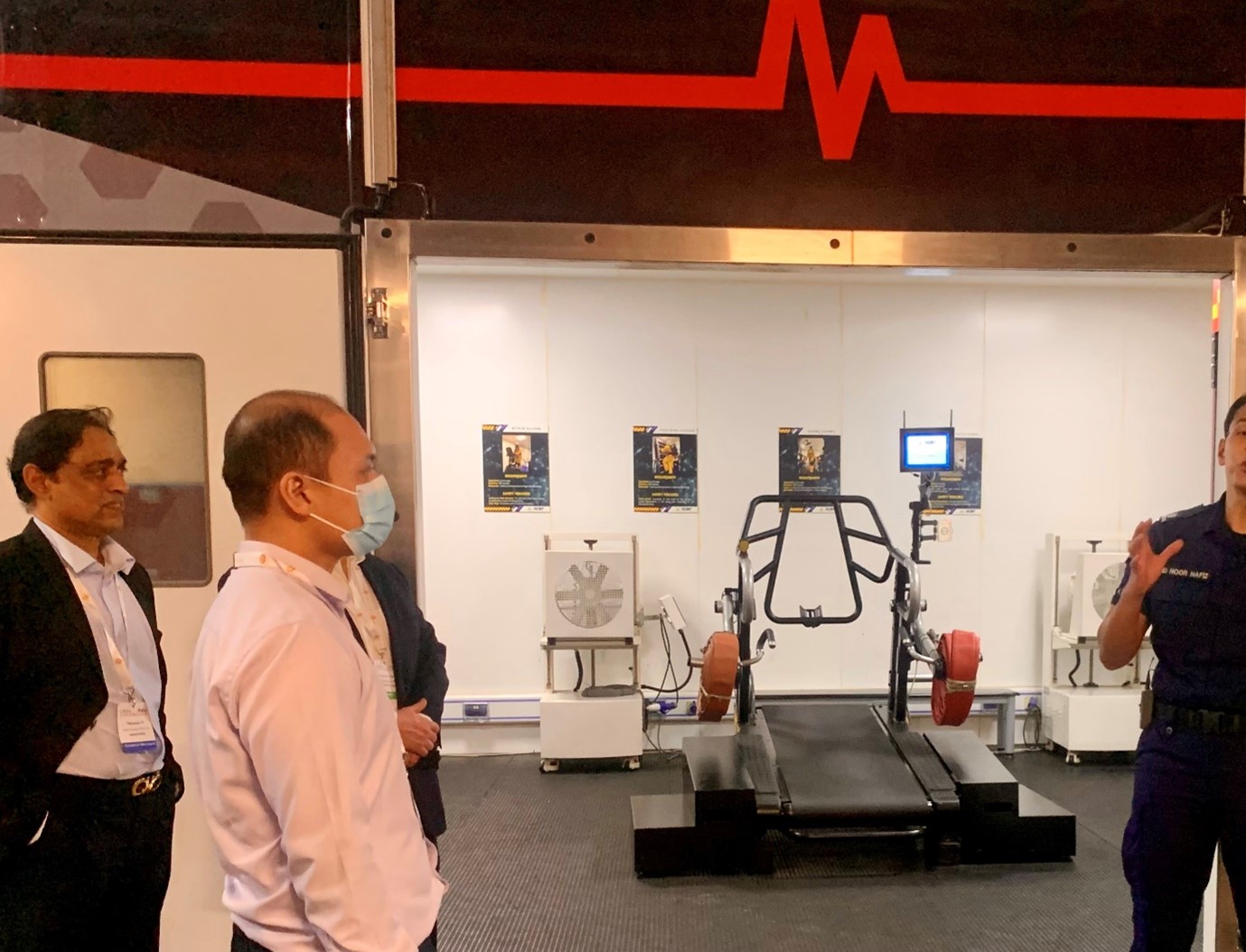 This might look like a regular treadmill, but the SCDF’s rescue officers run on it while carrying heavy hoses and dealing with temperatures of up to 80°C. (Photo: HTX)
This might look like a regular treadmill, but the SCDF’s rescue officers run on it while carrying heavy hoses and dealing with temperatures of up to 80°C. (Photo: HTX)
Showcasing HTX’s cutting-edge technology
While trained rescue officers are crucial for saving civilians from Hazmat disasters, technology is also needed to quicken the process of biothreat and chemical identification to ensure that dangerous chemicals are quickly identified and dealt with. At the conference, HTX’s CBRNE CoE showcased three innovative Proof-of-Concepts (POCs) that intend to do just that.
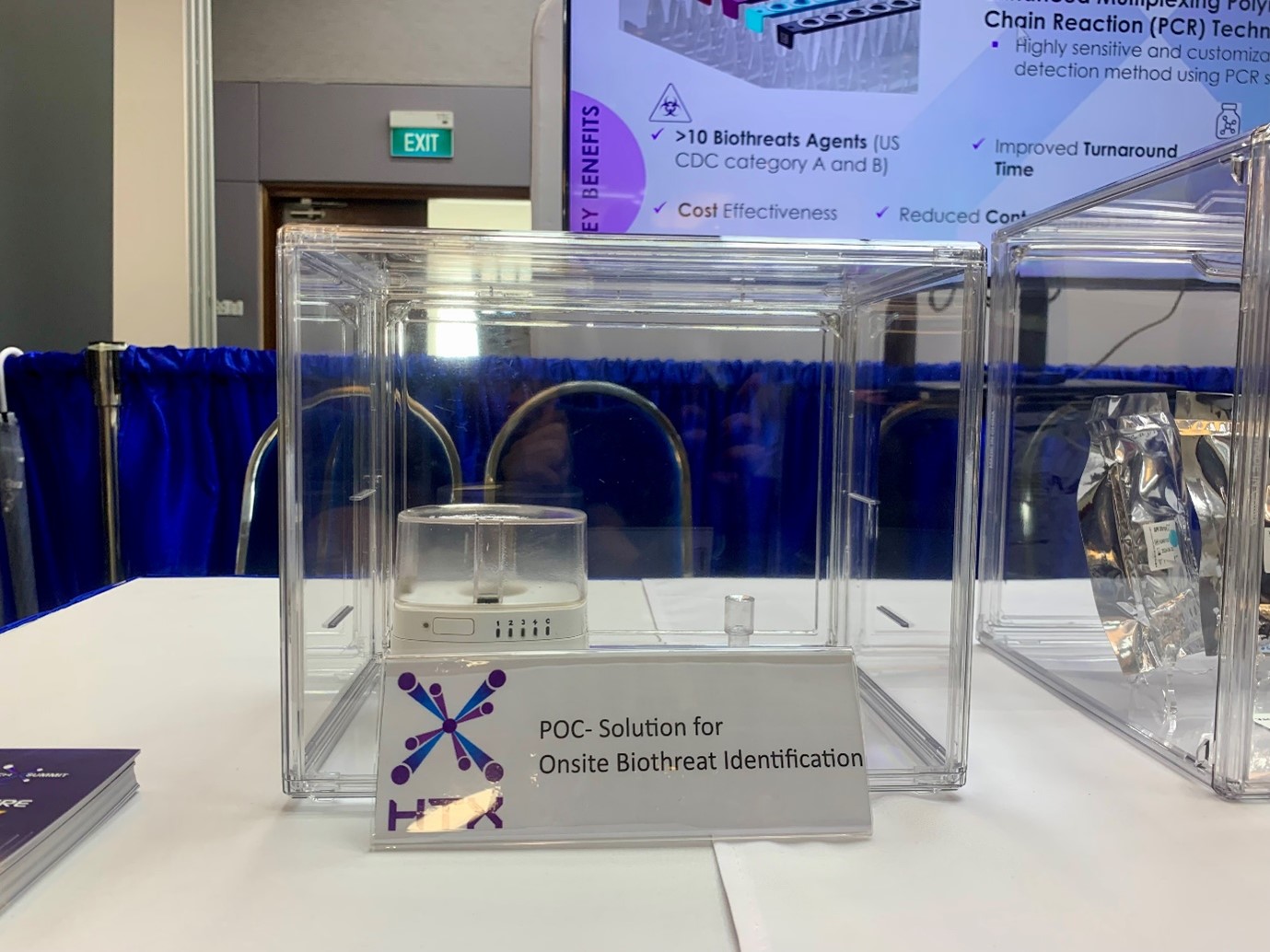 The Solution for Onsite Biothreat Identification is a portable and lightweight device that uses Loop-Mediated Isothermal Amplification (LAMP) technology to help SCDF’s frontline officers rapidly identify biological threats on the ground. (Photo: HTX).
The Solution for Onsite Biothreat Identification is a portable and lightweight device that uses Loop-Mediated Isothermal Amplification (LAMP) technology to help SCDF’s frontline officers rapidly identify biological threats on the ground. (Photo: HTX).
First up is the POC Solution for Onsite Biothreat Identification. Unlike conventional Polymerase Chain Reaction (PCR) tests that need changing (cycling) temperatures to function, LAMP technology functions at a constant temperature. This feature enhances the device’s portability and enables SCDF officers to bring the device with them on-the-go, as there is no need for bulky external devices, like thermal cyclers, to be attached.
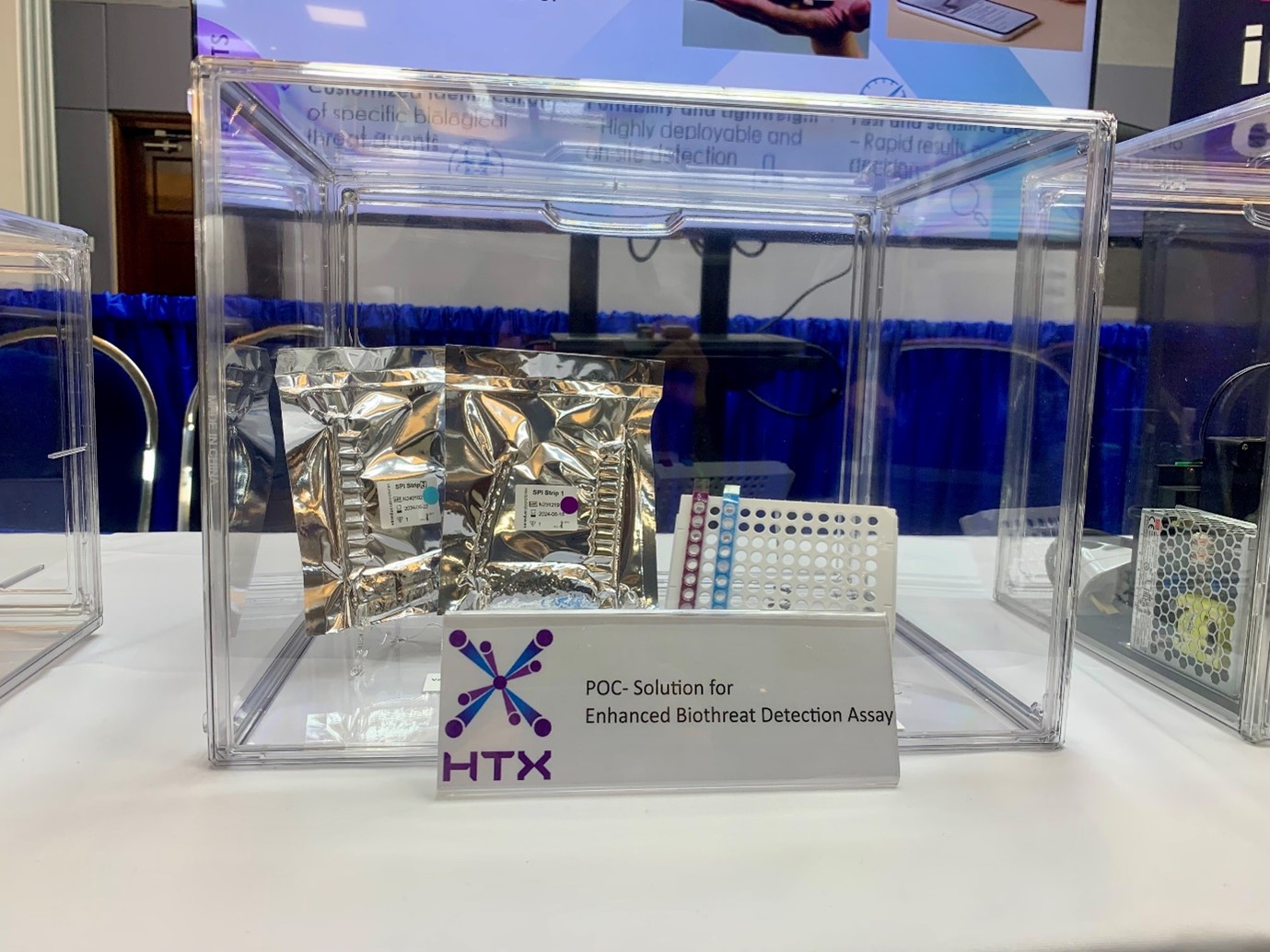 Another POC showcased was the Solution for an Enhanced Biothreat Detection Assay, created in collaboration with Veredus Laboratories. (Photo: HTX)
Another POC showcased was the Solution for an Enhanced Biothreat Detection Assay, created in collaboration with Veredus Laboratories. (Photo: HTX)
Next is the Solution for an Enhanced Biothreat Detection Assay. While it uses conventional PCR technology, the CBRNE CoE has tailored HTX’s test reagent kits to accommodate a larger number of biothreat agents for sampling. This modified test reagent kit will allow users to identify over 10 biothreat agents within an hour, greatly increasing the speed and efficiency at which they can detect harmful biological threats.
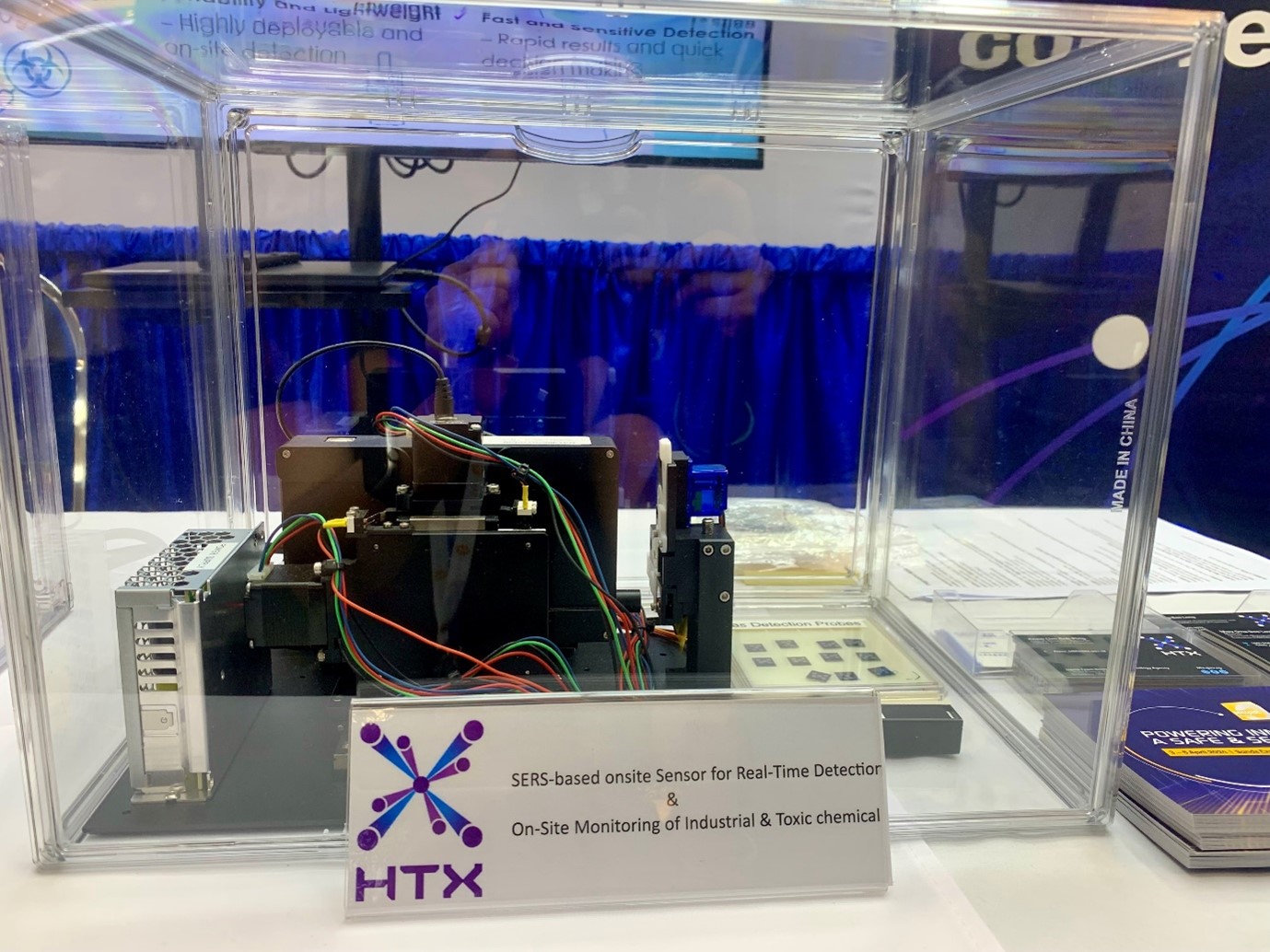 The POC SERS-based Onsite sensor, created in collaboration with the Nanyang Technological University (Photo: HTX).
The POC SERS-based Onsite sensor, created in collaboration with the Nanyang Technological University (Photo: HTX).
The third POC is the SERS-based Onsite Sensor for Real-Time Detection and On-Site Monitoring of Industrial and Toxic Chemicals. The SERS sensor represents a breakthrough in safety for workers in Singapore’s industrial areas. It aims to be the first sensitive chlorine detector on the market, capable of detecting even trace amounts of chlorine that can arise from leaks in these areas. SERS works by amplifying the light scattering signal of a molecule, creating a unique sort of molecular “signature” called a spectrum. Much like human fingerprints, this spectrum is unique to every molecule. As SERS amplifies this spectrum, it enables the sensitive detection of molecules at low concentrations.
Dealing with the CBRNE threats of tomorrow
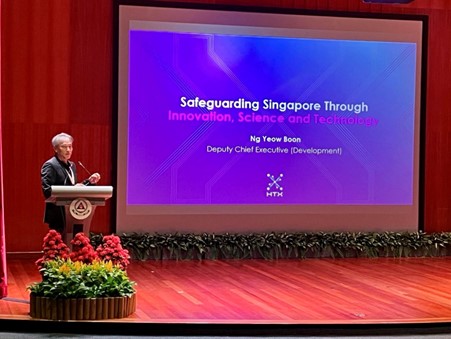 DCE (Development) Ng Yeow Boon shared about HTX's role in combatting CBRNE threats. (Photo: HTX)
DCE (Development) Ng Yeow Boon shared about HTX's role in combatting CBRNE threats. (Photo: HTX)
As technology evolves, so do the dangers of future unknown CBRNE threats. HTX’s Deputy Chief Executive (Development) Mr Ng Yeow Boon shared with delegates how HTX, in close collaboration with the SCDF, aimed to tackle these threats by using cutting-edge technology.
A key technology he highlighted was HTX’s Smart Next-Generation sensors that augment data collection by detecting hazardous gases quicker and over a wider area compared to their predecessors. This data would then be run through state-of-the-art Artificial Intelligence (AI) models and stimulations to better predict future threats and augment Singapore’s defence capabilities.
He emphasised that the CBRNE CoE was not only developing predictive technology, but that it was expanding Singapore’s protective science and engineering capabilities to keep Singaporeans safe from potential chemical and biohazard exposures.
“I think this conference is a testament to the importance of fighting future CBRNE threats and highlights the need to bring like-minded people together to further our capability development towards this goal”, he concluded.

